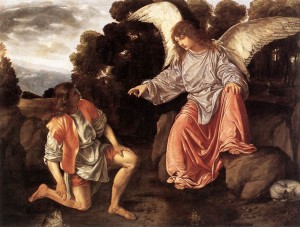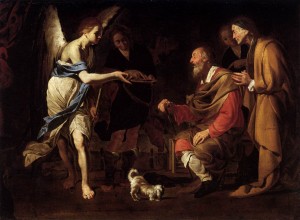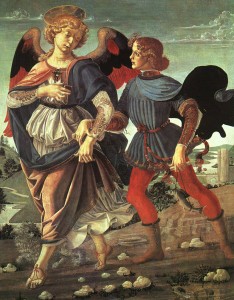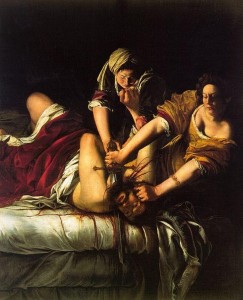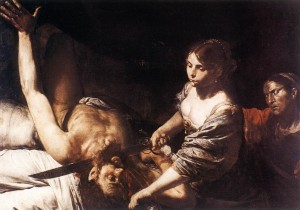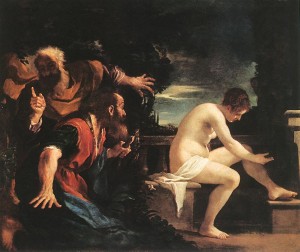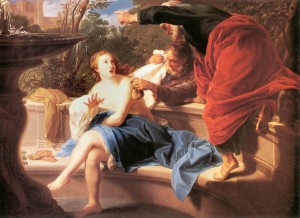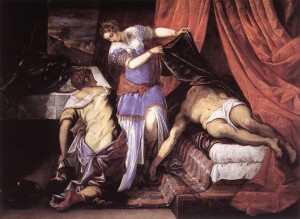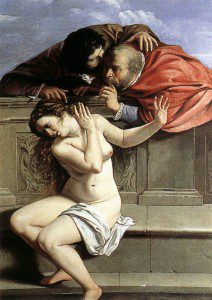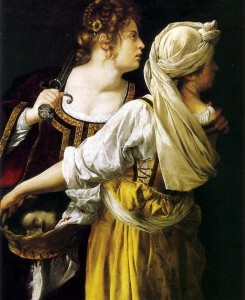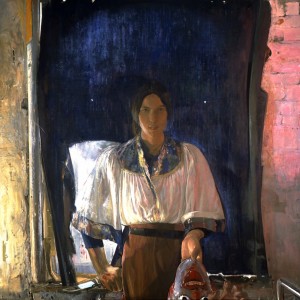I recently wrote about how Deuterocanonical books like Judith, Tobit, and Maccabees dropped out of the Protestant consciousness, and why they need to be rediscovered. One excellent argument is the astonishing influence that these books have had on Christian writers and artists. If we do not know the books, we miss the meaning of a great deal of Christian art and literature.
To begin with a minor example, Milton’s Paradise Lost describes Satan’s reaction to the atmosphere of Paradise. He was
Better pleased than Asmodeus with the fishy fume
That drove him, though enamoured, from the spouse
Of Tobit’s son, and with a vengeance sent
From Media post to Egypt, there fast bound.
The story is from Tobit. Sarah, daughter of Raguel, is accursed. Seven times she has married, and each time, the demon Asmodeus intervenes to kill the husband. Her final desperate attempt is marrying Tobias, son of Tobit.
The angel Raphael instructs him to drive off the demon by burning the heart and liver of a fish, which finally forces Asmodeus to flee.
In that particular case, not knowing the story scarcely represents a cultural abyss, but matters are different in the visual arts. For several centuries, the Deuterocanonical books gave generations of artists some of their most popular themes. I will not illustrate this here at any length, beyond suggesting a simple project. Go to Google images, and feed in any of the following three search terms:
Tobias and the angel
You will be amazed by the number of paintings that appear, by the long time span that they cover, and by the range of first rate artists that have treated these subjects.
Take for instance the gruesome story of Judith, who saves her country by entering the tent of the enemy general Holofernes and decapitating him while he sleeps. A non-exhaustive list of the painters who have covered the legend would include Michelangelo, Botticelli, Mantegna, Giorgione, Rembrandt, Rubens, Caravaggio, Goya, Klimt, and Jerome Witkin. And that takes no account of stained glass portrayals, or of Donatello’s sculpture.
The Judith story features in Chaucer and Dante.
William Shakespeare himself had three children: Judith, Susanna, and Hamnet.
In fact, these three stories have provided the theme for more significant paintings than the great majority of more familiar Old Testament texts. This is scarcely surprising, as between them they cover those three powerful artistic themes, of lust, violence and religion.
Susanna especially gave painters and patrons the opportunity to present sumptuous nude imagery, with a titillating element of voyeurism.
(Even in the 1930s, Thomas Hart Benton’s depiction was so explicit as to be controversial).
Judith’s victory was so gory that even today it would arouse qualms if it featured in a particularly bloody video game.
By the way, before you consign most of this art to the realm of male fantasy, do recall that some of the finest paintings of both Judith and Susanna were by Artemisia Gentileschi, the greatest woman painter of the seventeenth century.
She used the stories magnificently to explore diverse images of womanhood, as both victim and conqueror.
I’ll return later to the religious implications of these books, but as cultural sources, they are enormously important.


